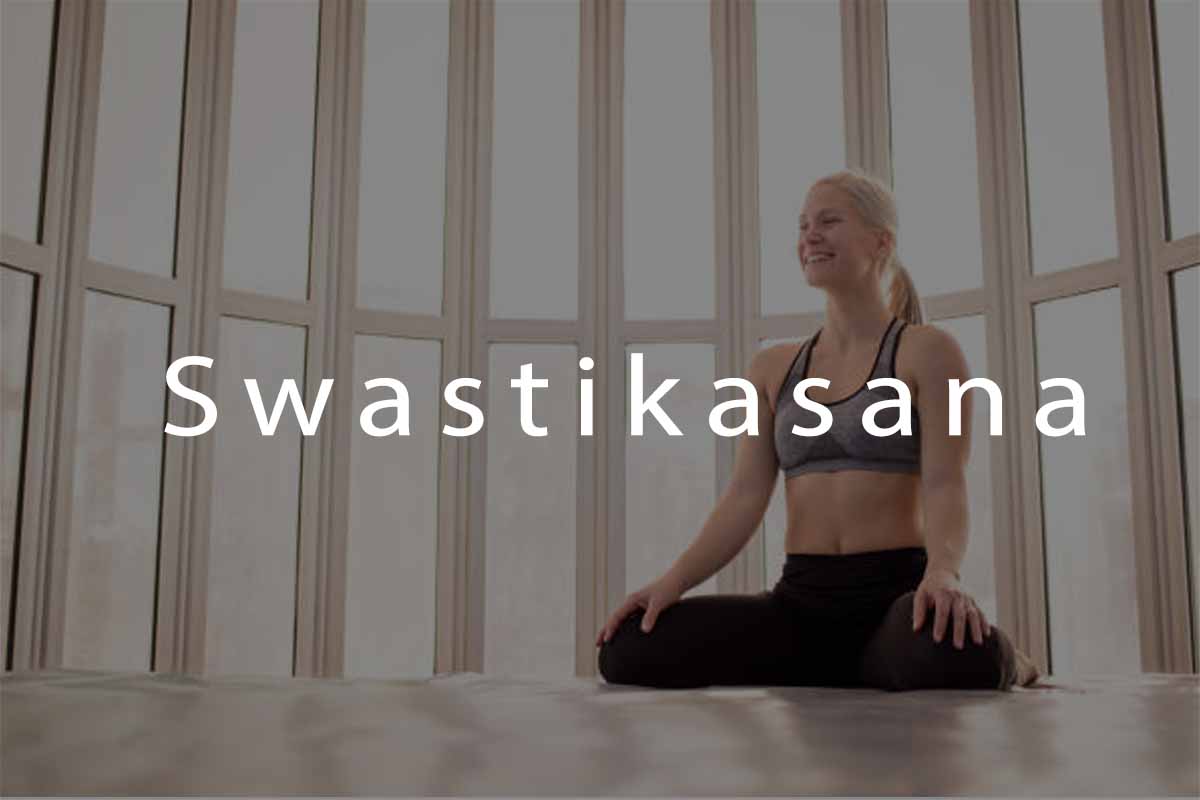Swastikasana is another yoga posture in which a practitioner can sit for a longer period of time. This asana is suitable for those practitioners who have difficulty performing padmasana or siddhasana.
Etymology of Swastikasana
The name Swastikasana comprises two Sanskrit words: ‘Swasti’ meaning and ‘Asana’ meaning posture. The swastika is also an auspicious symbol in Hindu culture. The asana is known by this name, as the position of the legs resembles the sign of Swastika.
Steps for performing Swastikasana
1. Sit down with your legs stretched ahead.
2. Bend the left leg inwards and place it near your right thigh. your left foot’s sole must touch the inner part of the right thigh.
3. Bend the right leg inwards and place it above your left leg, so that the foot is rested between the calf and thigh muscles of the left leg.
4. Grab the toes of the left foot and pull them upwards. Place the left foot above your right leg. The foot must be rested between the calf muscle and thigh of the right leg. Ensure that both knees are touching the ground. The neck and spine must be in a fully erected position
5. Breathe calmly. Rest both hands on the knees and assume Gyan mudra. try to concentrate on the middle region of your eyebrows.
6. Hold this posture for as long as you want to or can sit this way.
Precautions for beginners/ practitioners
1. People suffering from sacral infection and sciatica must take the advice of a certified yoga instructor or consult their doctor.
2. It is advised to practice this asana for Ten or Fifteen minutes in the beginning, the duration of holding the pose can be increased gradually.
Benefits of performing Swastikasana
1. Can be performed by people suffering from leg pain and varicose veins.
2. Calms the mind.
3. Helps in improving concentration power.
